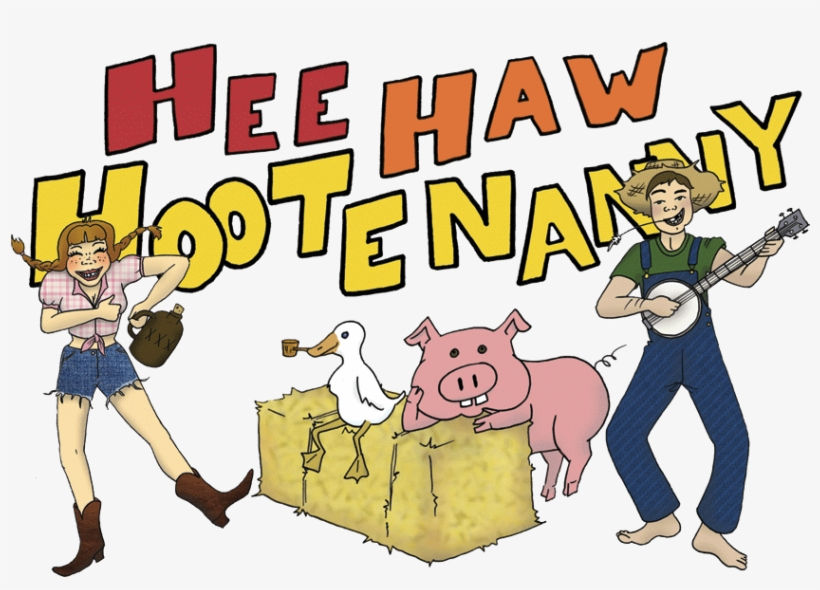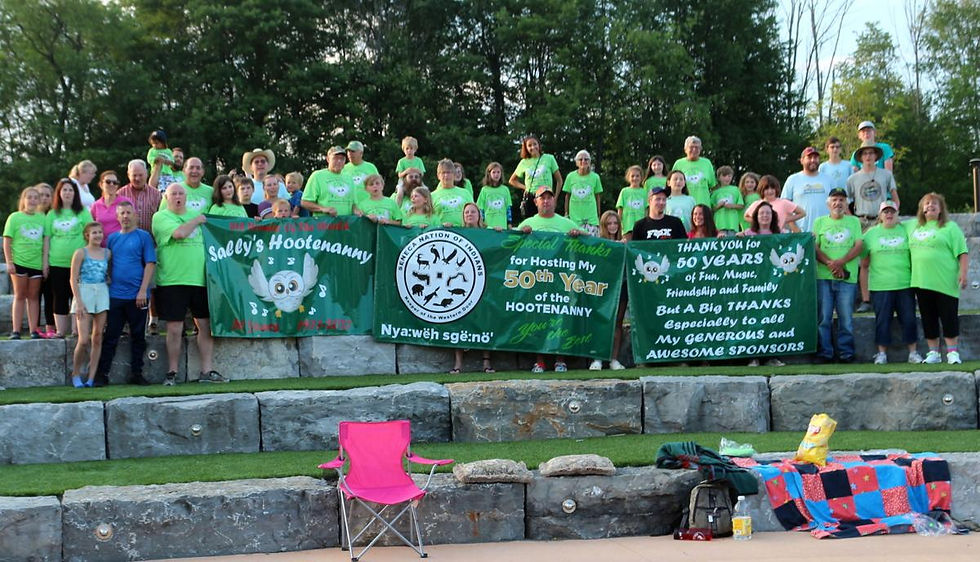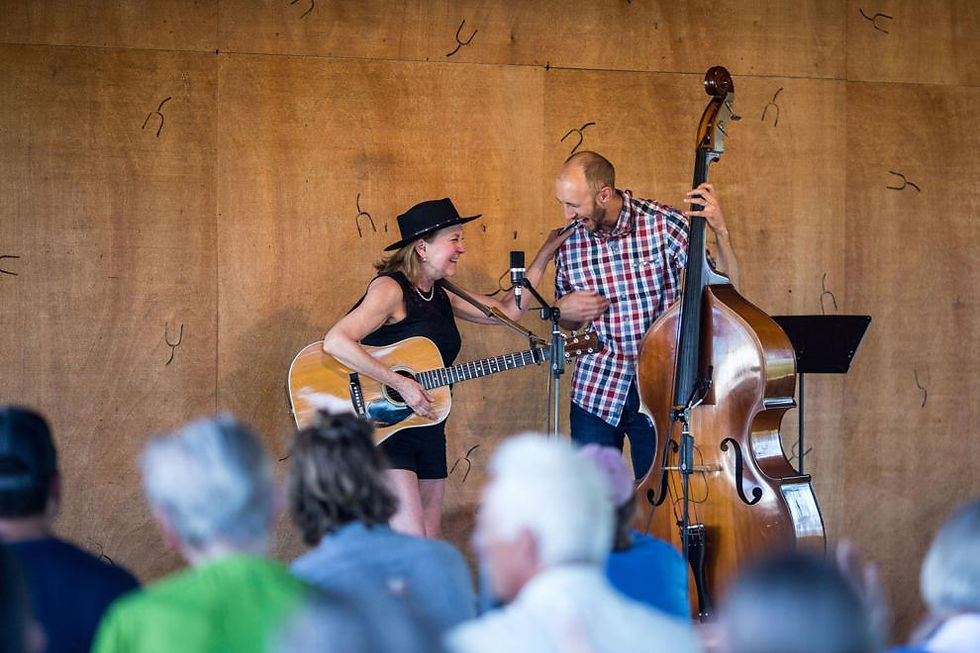Saturday, November 20, 2021 - Hootenanny
- Mary Reed

- Nov 20, 2021
- 7 min read

Tonight I went to an event at Addison Circle Park called Harvest Hootenanny. There were several inflatables like the one in the photo plus a couple of bounce houses, miniature golf, a hayride and petting zoo. You could even get an airbrushed tattoo. I listened to country music artist James Lann who has opened for Chris Cagle, Clay Walker, Clint Black, Cross Canadian Ragweed and Pat Green. He has three successful studio albums. Nine of his original compositions have hit the Billboard Texas regional charts at No. 1. I am not a huge country music fan, but I did like most of James’ renditions of original and classic songs. The next band was the Bodarks, described as “high-powered hootenanny … throwing down ragtime, jug band and Western swing, but mixed with punk.” They had been contacted by “America’s Got Talent” to audition because a producer liked the music on their website. Plus, because I took a survey on an iPad for the Town of Addison, I got a free hot chocolate. All in all, a lovely evening. I do remember watching the 1960s television show “Hootenanny.” Acts included The Chad Mitchell Trio, The Limeliters and The New Christy Minstrels. It was toe-tapping music that was easy to listen to. Let’s learn more about hootenannies.

According to Wikipedia, hootenanny is an Appalachian colloquialism that was used in early 20th century U.S. as a placeholder name to refer to things whose names were forgotten or unknown. In this usage it was synonymous with thingamajig or whatchamacallit, as in: "Hand me that hootenanny." Hootenanny was also an old country word for "party." More recently, the word most commonly refers to a folk music party with an open mic, at which different performers are welcome to get up and play in front of an audience.

Origin of modern folk music usage
According to Pete Seeger he first heard the word “hootenanny” in Seattle, Washington in the late 1930s. It was used by Hugh DeLacy’s New Deal political club to describe their monthly music fundraisers. After some debate, the club voted in “hootenanny” which narrowly beat out “wingding.” Seeger, Woody Guthrie and other members of the Almanac Singers later used the word in New York City to describe their weekly rent parties, which featured many notable folksingers of the time. In a 1962 interview in Time, Joan Baez made the analogy that a hootenanny is to folk singing what a jam session is to jazz.

Events
During the early 1960s at the height of the American folk music revival, the club Gerde's Folk City at 11 West 4th Street in Greenwich Village started the folk music hootenanny tradition every Monday night, that featured an open mic and welcomed performers known and unknown, young and old. The Bitter End at 147 Bleecker Street continued the folk music hootenanny tradition every Tuesday night.

A weekly hootenanny has been held during the summers at Allegany State Park most years since 1972. According to Rick Miller’s July 1, 2021 article “Sally’s Hootenanny Kicks Off 50th Anniversary at Seneca Museum Grounds” in the Olean Times Herald, Sally Marsh has been singing at the hootenanny for half as long as the state park has been in existence. Her state park hootenannies drew between 300 and 500 people on Thursday nights in past summers.

According to Wikipedia the Hootenanny is an annual one-day rockabilly music festival held at the Oak Canyon Ranch in Irvine, California, which also incorporates a vintage car show. According to Kelli Skye Fadrosky’s June 10, 2011 article “Looking Back at Hootenanny” in The Orange County Register, “Hootenanny has hosted more than a few living legends over the past years including Jerry Lee Lewis, Chuck Berry and Little Richard. Other past performers were Reverend Horton Heat, Dropkick Murphys, Big Sandy, 3 Bad Jacks and Royal Crown Revue.

According to Robert Shur’s Oct. 13, 2021 article “Hootenanny finds new shelter at the Wort” in the Jackson Hole News & Guide, for nearly 30 years the Jackson Hole Hootenanny has circled up most every Monday at Dornan’s in Moose, except for a short spell when the acoustic songfest was held in the Snow King Sports and Events Center.
However, because of staffing issues at Dornan’s, the Hoot has relocated to the Silver Dollar Showroom at The Wort Hotel — at least for the time being.
The Hootenanny is a beloved Jackson Hole tradition that started, legend has it, in the 1960s when auto-harping ski-mountaineering pioneer Bill Briggs gathered friends and guests to share tunes under the bridge at Moose, what became known as Teton Tea Parties.
After a hiatus for some decades, Bill and Dick Barker revived the concept in 1993 and rechristened it the Jackson Hole Hootenanny. They even found a roof to put over its head at Dornan’s Spur Bar, with the Teton Range just outside the north-facing wall of glass.
Over the years, the Hoot developed a coterie of like-minded musicians and listeners, old hands and young guns too. It also attracted many a guest from summer residents and transient troubadours to the likes of John Denver, Ramblin’ Jack Elliot, Peter Rowan, Tom Rush and Chuck Pyle. More than a few artists germinated their musical careers on the two-mic stage, including Pete and Anne Sibley and Eric Stone.
In 2004 filmmaker Juliet Sonnenberg began filming the action, eventually combining onstage antics with interviews and interactions for the award-winning 90-minute documentary “Hoot in the Hole.” In September 2015 the crew celebrated the 1,000th Hootenanny, and it continues to go strong.

According to Claire Duncombe’s March 2, 2021 article “Swallow Hill’s Hootenannies Have Found New Life Online” at westword.com, “Swallow Hill’s hootenannies online are carrying on a tradition that began in 1962 at Harry Tuft’s Denver Folklore Center. Along with selling guitars, Tuft created a meeting ground for the folk-enthused that’s outlasted nearly six decades of changing venues and business iterations — with only the latest hootenannies taking place online. But despite the newfangled setup, sincerity shines through as musicians and students gather to share what they love.
This is how folk music goes electric again — and back to the homes it comes from. Folk has long been played on porches and wherever people can get together, explains Jim Broyles, a hootenanny attendee. ‘That’s really what I love — the authenticity of it.’ he said. ‘It’s not hugely professional. It’s just folks gathering together to sing.’
Swallow Hill CEO Paul Lhevine said, ‘We have created this environment where people come together and build community. Parents bring their kids, and kids bring their friends. There’s a feeling of togetherness.’ The nonprofit hosts classes to further its mission of bringing ‘the joy of music to life every day.’
Hootenannies — or hoots, as they’re often called — rose to national popularity during the folk revival in New York City’s Greenwich Village. According to Woody Guthrie in a 1946 article in Time magazine, the term originated during a Lumber Workers’ Union songfest where a woman named Annie sang the loudest and became known as ‘Hootin’ Annie,’ and the idea spread.”
Recordings
Hootenanny with the Highwaymen
According to Deborah Collin’s review “One in a Million” on amazon.com, “Hootenanny with the Highwayman" was arguably one of the best albums by this popular folk group of the early 1960's, due mainly to the addition of guest performers, Mayo Muir and Ann Morrill, who raised the already high standards and offered an added depth and clarity. The usual favorites, "Michael, Row Your Boat Ashore" and "Cotton Fields" are almost eclipsed by the beauty of "The Turtle Dove," and by Muir and Morrill's rich and textured performances. They love their material, and it shows.
Hootenanny by The Glencoves
According to Wikipedia, The Glencoves were a folk pop group formed in 1961 in Mineola, Long Island, New York. Formed while attending the same high school, members included Don Connors (founder, lead vocals, banjo and guitar), Bill Byrne (vocals) and Brian Bolger (vocals and guitar). After releasing their first single record, the group was joined by John Cadley (vocals and guitar).
Byrne went on to become mayor of Morgantown, West Virginia, and currently serves as Morgantown city councilor.
Cadley has continued to perform bluegrass music with his band, John Cadley & The Lost Boys, and as half of the duo, The Cadleys (John Cadley and Cathy Wenthen).
Connors became a photographer and owned and operated a film and video production company, Don Connors Productions, in New York City. He has continued to sing and play guitar, incorporating additional genres of country, blues and rock music.
The group had a hit single with their Select Records release "Hootenanny," which peaked at No. 5 or No. 6 (Billboard and Cashbox) in the local New York market, and landed at No. 38 on the Billboard Hot 100 in 1963. The song's title refers to the folk singalongs which became popular during the folk revival of the 1960s.
Paul and Paula’s Holiday Hootenanny
Paul & Paula — Ray Hildebrand, born December 21, 1940, and Jill Jackson, born May 20, 1942 — are a former American pop singing duo, best known for their 1963 million-selling, number-one hit record, "Hey Paula." They recorded “Holiday Hootenanny” in 1963.
Television
“Hootenanny” was an American musical variety television show broadcast on ABC from April 1963 to September 1964. The program was hosted by Jack Linkletter. It primarily featured pop-oriented folk music acts, including The Journeymen, The Limeliters, the Chad Mitchell Trio, The New Christy Minstrels, The Brothers Four, Ian & Sylvia, The Big 3, Hoyt Axton, Judy Collins, Johnny Cash, The Carter Family, Flatt & Scruggs and the Foggy Mountain Boys, The Tarriers, Bud & Travis and the Smothers Brothers. Although both popular and influential, the program is primarily remembered today for the controversy created when the producers blacklisted certain folk music acts, which then led to a boycott by others.
By the time “Hootenanny” concluded its first 13 weeks, a craze had been born. A front-page Variety story noted that "the big demand for the folk performers in virtually all areas of show biz — records, concerts, college dates, TV, pix — is stimulating a new folk form that can appeal to a mass audience. Among writers now contributing to the new-styled folk song are Bob Dylan, Mike Settle, Tom Paxton, Shel Silverstein, Bob Gibson, Malvina Reynolds, Oscar Brand, Pete Seeger and Woody Guthrie. Record labels from the independent Folkways and Elektra to the mainstream Columbia and RCA-Victor released folk music compilation albums with "Hootenanny" in the title.
After two seasons, shifting musical tastes — heavily influenced by the British Invasion starting in 1964 — and a decline in the program's variety led to its effective replacement by Shindig!, a similar but more broadly-based and pop music-oriented variety program.
Movies
MGM's Sam Katzman produced “Hootenanny Hoot,” a motion picture featuring The Brothers Four, Johnny Cash, Judy Henske, Joe and Eddie, Cathie Taylor, The Gateway Trio and Sheb Wooley — all of whom did or would appear on the “Hootenanny” television show.
A television director from New York travels to Missouri and learns about the hootenanny craze; he works to telecast a production of the event while his ex-wife works to win him back. The movie stars Peter Breck, Ruta Lee and Joby Baker.




Comments